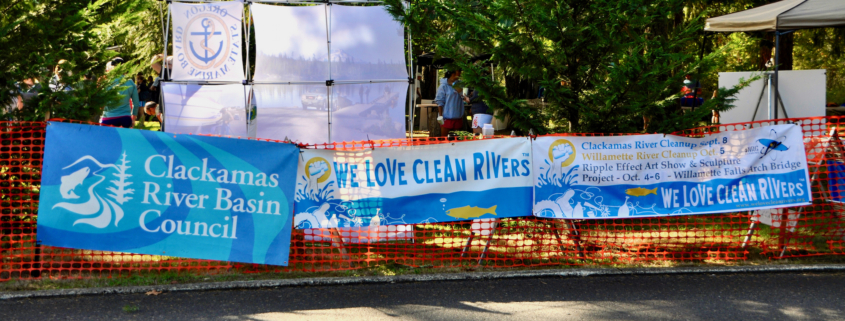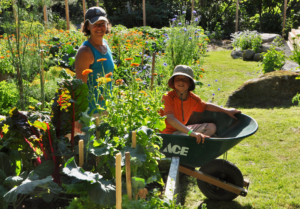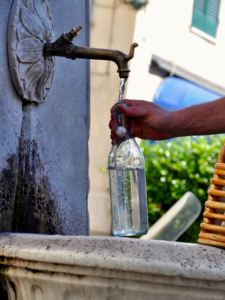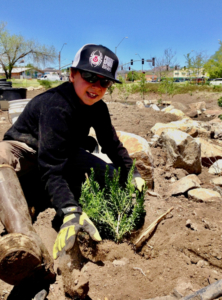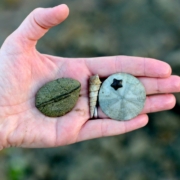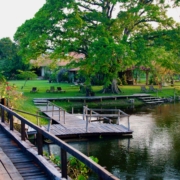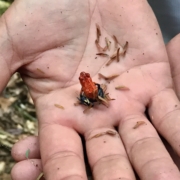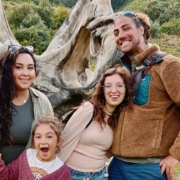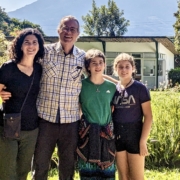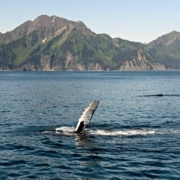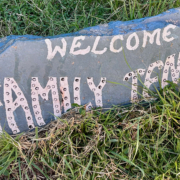Sustainable Family Travel: A Curious Path to Action
I want to write this blog about sustainable family travel without sounding trite, but I have to start by saying something pretty obvious – we only get one chance to live the life we want, and we only have one magnificent planet on which to live it. Our choices matter to us and future generations. Let’s choose to activate long-term sustainability solutions through hope and inspiration rather than fear and doomsaying.
This is not a sustainability blog that lists green travel tips. That, you can read in an excellent piece by The Points Guy entitled 8 sustainable travel tips from expert green travelers.
Neither is this a blog that features must-have eco-travel products. That, you can find in a great summary by cnn.com entitled 30 of the best eco-friendly travel products to take on your next trip.
Nor is this a blog about how to reduce your travel carbon footprint. Important? Yes! But not what this blog is about. You can read this National Geographic article to learn about 10 ways to reduce your carbon emissions when traveling.
This blog explores how sustainable family travel can empower the next generation of environmental stewards in our kids as they connect to nature, experience awe, and engage in grassroots solutions. Of course, if achieving sustainable development were strictly a math problem based on carbon footprint, we wouldn’t travel at all. But arriving at meaningful solutions requires creativity, changes in attitudes, and a whole lot more than simply not flying. Travel feeds diversity and diversity helps us think outside the box. In many ways, travel, when done thoughtfully, can contribute to a sustainable future. That’s a big claim. Let’s break it down.
What is Sustainable Family Travel?
We can think of sustainable family travel as a manner of travel that minimizes harm to the natural and cultural environment while maximizing economic vitality for local people. Inherent in this definition of sustainable travel is an educational intention to understand both how our travels impact communities and the environment, and how we can make a positive difference. We see sustainability as an ethic, a framework, and the end goal of our travel decisions and behavior.
So what is our promise to future generations? How can we ensure our grandkids and their kids have forests to explore, rivers to run, wilderness to wander? One important thing we can do is take them there! Through long-term family travel and worldschooling, we can teach our children to care. We can teach our children to act. We can teach our children well.
Connecting Children to Nature
Worldschooling is a perfect way to raise little sustainability lovers. We know that those who care about a place are more likely to work to protect that place, so why not expose our children to rainforests, high prairie, coastal wetlands, and more? Experiencing nature over weeks and months lays down a fertile layer of care in our children.
Traveling the world with kids is their ticket to guardianship, to feeling invested and part of a community. This is especially true for long-term travelers, who often have more time to experience and get to know a place. On the road, there is time to saunter. As Rolf Potts, author of Vagabonding and the Vagabond’s Way, likes to say, “You can walk until your day becomes interesting.” We can savor the experiences, connect with the locals, and learn their ways, their songs, and customs. As long-term travelers, we can settle into a place, discover what everyone is up to, and get involved. The imprint of this direct experience is indelible and it switches on in our kids a personal connection.
When my family took our Wonder Year, we designed an itinerary that led us deep into the wilderness, along rugged shorelines, into historic places and local communities. We wanted our son to meet people everywhere and have diverse first-hand experiences with unique places that hold cultural, natural, historical, and spiritual value. We believe that conservationists are born out of love for the natural world so if we could turn Johnny on to all kinds of amazing places as a youngster, we knew he would work to protect those amazing places as an adult.
The Power of Awe
Many teens cite climate change as a major source of the mental health crisis. Dystopian novels are not helpful; more exposure to doomsaying takes away the magic and beauty of the world outside.
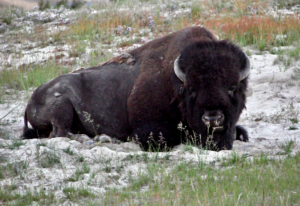
The large herds of bison that roam Yellowstone are an excellent example of sustainability at work. Their grazing, among other benefits, helps cycle rich nutrients into back plants and protects soil moisture.
When we are traveling, we have time to notice the little things, and we have time to really experience the big things. Maybe we will find out about a concert happening in a few days or a festival, foot race, or community gardening event. As travelers, we can re-route to an awe-inspiring experience and in these moments, we gain openness, understanding, humility, a sense of wellbeing, and altruism. How wonderful to drop pins of hope again and again as we experience awe side by side with our kids. Often unplanned, these awesome moments make us pause and feel the profound beauty of the universe, the grandeur of things so much bigger than we are. Indeed we can experience awe at home, it’s just that as long-term travelers, we live so close to nature, and are in new places all the time. This daily dose of wonder helps our children develop compassion, concern for others, and optimism, all components of a sustainability mindset.
Engagement in Grassroots Environmental Solutions
Another reality of traveling as a family is the preponderance of grassroots worldschooling opportunities. These sustainability sessions can be either chance encounters or planned engagements.
A chance encounter might look like this: When dropping into a local cafe, park, or library, you read the bulletin board, pick up the local paper, or talk to the barista to get the local scoop. Travelers looking to learn, as worldschooling families do naturally, can simply scratch below the surface to find out what’s happening around them. They can learn what the locals are concerned with. It might be the protection
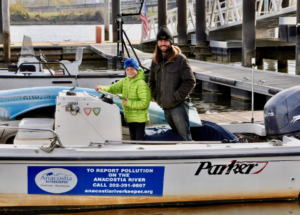
Heading out for a full day with the Anacostia Riverkeeper, an amazing organization that works to protect, restore and connect people and the local community to the Anacostia River in Maryland and Washington DC. Thank you, Trey!
of wildlife habitat for endemic species like rhinos in Namibia or big horned sheep in Colorado. You might be in a surf shop in Baja and hear about coastal protection efforts like in Cabo Pulmo, Mexico where the resolve of the local community led to the creation of a Natural Protected Area. Today, the coral reef and surrounding communities are thriving. Annika and her family met, by chance, some Canadian college-aged members of Surfrider while they were in Costa Rica. They took them out for a nice casado lunch to learn more about their projects, and have stayed in touch on social media ever since to follow their careers in sustainability and mission-driven business. With knowledge of local concerns and priorities, travelers can then take the next step and find out what local solutions are in play. Find out what the young people are doing and get involved in the grassroots action.
A planned approach might involve advanced research to see if you can arrange site tours, meetings, and participation in an event. Even before we left for our Wonder Year, our family reached out to a national nonprofit that supports community-driven watershed protection, an issue we care about and were professionally involved with. We became “family ambassadors” for the group and as we traveled across the United States, we met with river heroes and sustainability champions to learn about local struggles and solutions. We wrote some articles to help share their success stories. We participated in river clean-ups, green infrastructure projects, and community service work throughout our entire Wonder Year. Through this type of solutions-focused engagement, we can turn our travel experiences into fieldwork, advocacy, and exploration.
Bringing it Home
Traveling as a family, and seeking to learn, connect, and engage is an excellent way to be part of a solution. It is also an excellent way to control stress and help our kids find their agency to feel hopeful about the future rather than sad and helpless. There are so many ways to engage, and here we offer just a small sample of solutions-focused resources. We are especially impressed with, and inspired by, the brilliance of young leaders and how they articulate a vision for the future and mobilize peers and adults alike.
Patagonia Action Works – connects individuals to environmental action groups around the world
Fridays for Future – youth-led climate activist network started by Greta Thunberg
American Climate Corp – newly launched campaign to train young people in clean energy, climate resilience, and conservation
UNICEF Toolkit for Young Climate Activists – information that helps prepare young people to be fully engaged in issues that matter to them
UN Youth2030 Strategy – an overarching framework for the UN to broadly and meaningfully engage young people across three priorities areas: peace and security, human rights and sustainable development.
Brand Ambassadors – Many companies and nonprofits have “brand sustainability ambassador” programs. Reach out to see if a partnership opportunity would work for your family.

